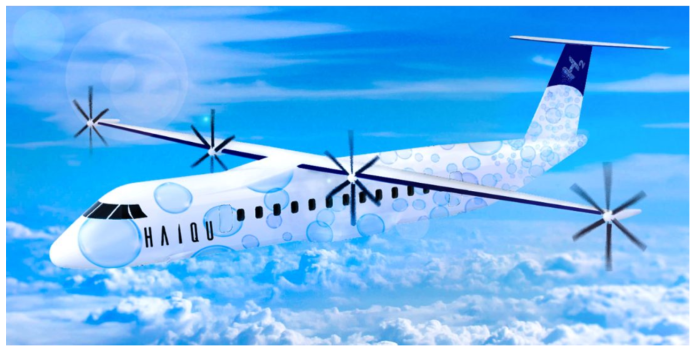Authors: Michele Sparano, Marco Sorrentino, Giovanni Troiano, Giovanni Cerino, Giuseppe Piscopo, Marco Basaglia, Cesare Pianese
Publication Date: 1 April 2023
Category: Hydrogen
Article Link: https://www.sciencedirect.com/science/article/pii/S0196890423001681
DOI: https://doi.org/10.1016/j.enconman.2023.116822
Abstract (Official):
The growing demand for air travel in the commercial sector leads to an increase in global emissions, whose mitigation entails transitioning from the current fossil-fuel based generation of aircrafts to a cleaner one within a short timeframe. The use of hydrogen and fuel cells has the potential to reach zero emissions in the aerospace sector, provided that required innovation and research efforts are substantially accomplished. Development programs, investments and new regulations are needed for this technology to be safe and economical. In this context, it makes sense to develop a model-based preliminary design methodology for a hybrid regional aircraft assisted by a battery hybridized fuel cell powertrain. The technological assumptions underlying the study refer to both current and expected data for 2035. The major contribution of the proposed methodology is to provide a mathematical tool that considers the interactions between the choice of components in terms of installed power and energy management. This simultaneous study is done because of the availability of versatile control maps. The tool was then deployed to define current and future technological scenarios for fuel cell, battery and hydrogen storage systems, by quickly adapting control strategies to different sizing criteria and technical specifications. In this way, it is possible to facilitate the estimation of the impact of different sizing criteria and technological features, at the aircraft level, on the onboard electrical system, the management of in-flight power, the propulsion methods, the impact of the masses on consumption and operational characteristics in a typical flight mission. The proposed combination of advanced sizing and energy management strategies allowed meeting mass and volume constraints with state-of-the-art PEM fuel cell and Li-ion battery specifications. Such a solution corresponds to a high degree of hybridization between the fuel cell system and battery pack (i.e., 300 kW and 750 kWh), whereas projected 2035 specs were demonstrated to help reduce mass and volume by 23 % and 40 %, respectively.
GAT Editor’s Comments:
– This paper develops a model-based preliminary design methodology for a hybrid regional aircraft assisted by a battery hybridized fuel cell powertrain, and finds an estimation of the impact of different sizing criteria and technological features in typical flight missions.
– The mathematical tool made considers energy management of the system to create techno-economically effective design of hybrid fuel cell-battery systems. The battery model was updated, meaning new versatile control maps with an optimization procedure needed to be created to maximize efficiency. The high-power demands of the take-off and landing phases were also considered.
– A conservative and optimistic technological prospect were created; the optimisitic prospect required substancial technological advancement in terms of aircraft systems and infrastructure between now and 2035.
– Sparano et al. suggest that to further develop the tool, it should be integrated into a broader design process that also considers the effect of masses and volumes on the aircraft’s dynamic behaviour. The tool could also be used for optimization analysis from the points of view of (1) design constraints and (2) the “blended” control strategy. Other extensions of the tool suggested are focused around technical (in particular parametric analyses) and economic aspects.


